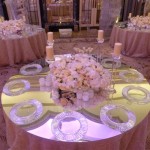Antique Oval Mirrors: A Reflection of Elegance and History
Antique oval mirrors, with their graceful curves and intricate frames, are more than just reflective surfaces. They are captivating pieces of history, embodying elegance and aesthetic sophistication. From the opulent gilded frames of the Baroque period to the understated simplicity of the Victorian era, antique oval mirrors have graced homes and palaces for centuries, offering a glimpse into the past and adding a touch of timeless charm to contemporary interiors.
Historical Significance and Evolution
The history of oval mirrors is intricately woven with the evolution of mirror-making techniques. In ancient times, polished metal surfaces, such as bronze, were used as rudimentary mirrors. However, it was the invention of glass and its subsequent development, coupled with the discovery of the reflective properties of silver, that paved the way for the creation of sophisticated mirrors. During the Renaissance period, Venetian glassmakers achieved remarkable advances in glassblowing techniques, allowing for the production of large and clear mirrors. This innovation coincided with the growing popularity of oval shapes in art and architecture, leading to the emergence of antique oval mirrors as a prominent decorative element.
The 17th and 18th centuries witnessed a surge in the demand for ornate mirrors, reflecting the opulence of the Baroque and Rococo periods. Elaborate frames, often crafted from gilded wood, silver, or even precious metals, were adorned with intricate carvings, painted designs, and elaborate moldings. These mirrors not only served a practical purpose but also functioned as status symbols, showcasing the wealth and taste of their owners. Subsequent eras, such as the Neoclassical and Victorian, saw a shift towards more restrained designs, with emphasis on symmetry, elegance, and craftsmanship.
Styles, Materials, and Characteristics
Antique oval mirrors exhibit a wide range of styles and variations, each reflecting the distinct aesthetic preferences of their respective eras. Baroque mirrors, typically characterized by their grand scale and elaborate ornamentation, often feature ornate frames with scrolling motifs, cherubs, and floral designs. Rococo mirrors, known for their whimsical elegance, showcase delicate curves, intricate floral patterns, and pastel hues.
Neoclassical mirrors, on the other hand, emphasize simplicity and symmetry, with frames crafted from polished wood or marble, adorned with minimalist moldings and classical motifs. Victorian mirrors, while often ornate, display a more restrained approach, with elaborate carvings and detailed ornamentation. The materials used in the construction of antique oval mirrors vary depending on the period and the desired level of opulence. Gilded wood, silver, bronze, and marble were commonly employed for frames, while glass, often with a slight distortion or patina, served as the reflective surface.
Key characteristics that distinguish antique oval mirrors from their modern counterparts include craftsmanship, patina, and provenance. Antique mirrors are typically handcrafted with meticulous attention to detail, evident in the intricacy of carving or the quality of materials used. Over time, mirrors develop a patina, a layer of age-related discoloration or wear, which adds to their charm and authenticity. The provenance, or history of ownership, also plays a vital role in the value and significance of antique oval mirrors.
Collecting and Appreciation
The collecting and appreciation of antique oval mirrors have become increasingly popular in recent years. These timeless pieces offer not only aesthetic appeal but also a connection to the past, a tangible link to bygone eras. When acquiring an antique oval mirror, authenticity, condition, and provenance are crucial factors to consider. Consulting with reputable dealers and collectors can provide valuable insights into the value and significance of potential acquisitions.
Antique oval mirrors serve as focal points in interiors, adding a touch of elegance and sophistication to any space. They can be incorporated into living rooms, bedrooms, dining areas, or entryways, creating a sense of grandeur and history. Their reflective surfaces amplify light, enhancing the overall ambiance of a room.
Beyond their decorative value, antique oval mirrors offer a unique window into the past. They reflect not only the changing styles and tastes of different eras but also the craftsmanship, values, and aspirations that shaped those times. As objects of historical and artistic significance, antique oval mirrors continue to captivate collectors and enthusiasts, reminding us of the enduring beauty and timeless elegance that transcends generations.

183 Antique Oval Mirrors For Ingantiques Co

Oval Polyurethane Framed Antique Gold Wall Mirror 25x33

Excellent Pair Of Gilt Oval Mirrors In Antique

Sydney Ornate Gold Oval Mirror Los Angeles Event Als Provenance

30 Sonore Oval Wall Mirror Antique Gold Infinity Instruments Target

Carved English Oval Mirror At 1stdibs Antique Vintage Mirrors

Stylewell Kids Medium Vintage Oval Framed Gold Mirror 23 In W X 31 H H5 Mh 973 The Home Depot

Antiques Atlas Huge Regency Antique Gilt Oval Mirror As111a1900 C55a

A Fine Quality 19th Century Giltwood Oval Mirror In Antique Mirrors

Simon S 18 Gold Wall Mirror Oval Framed Mirrors For Living Room Decor Hanging Vintage Home Com








